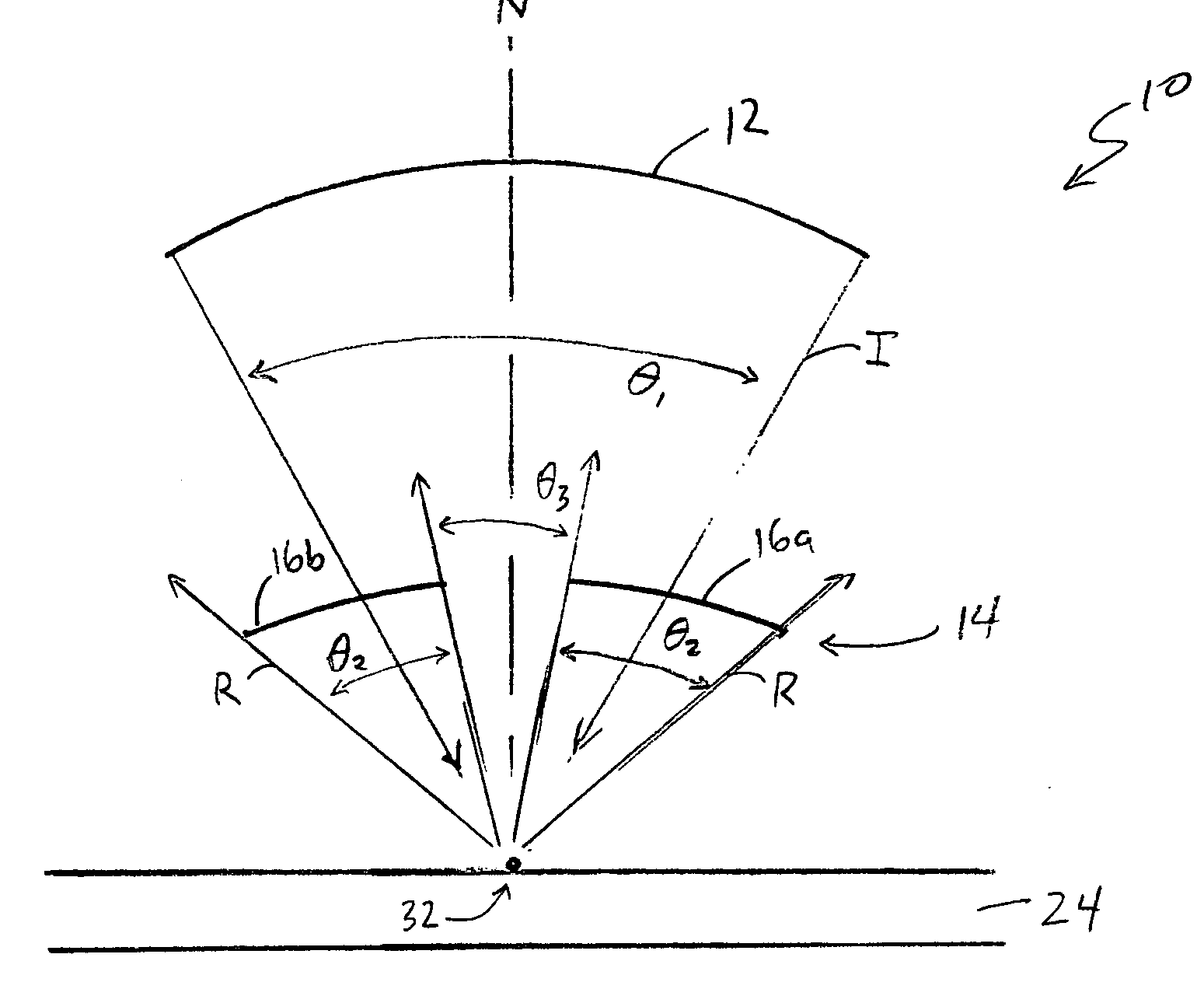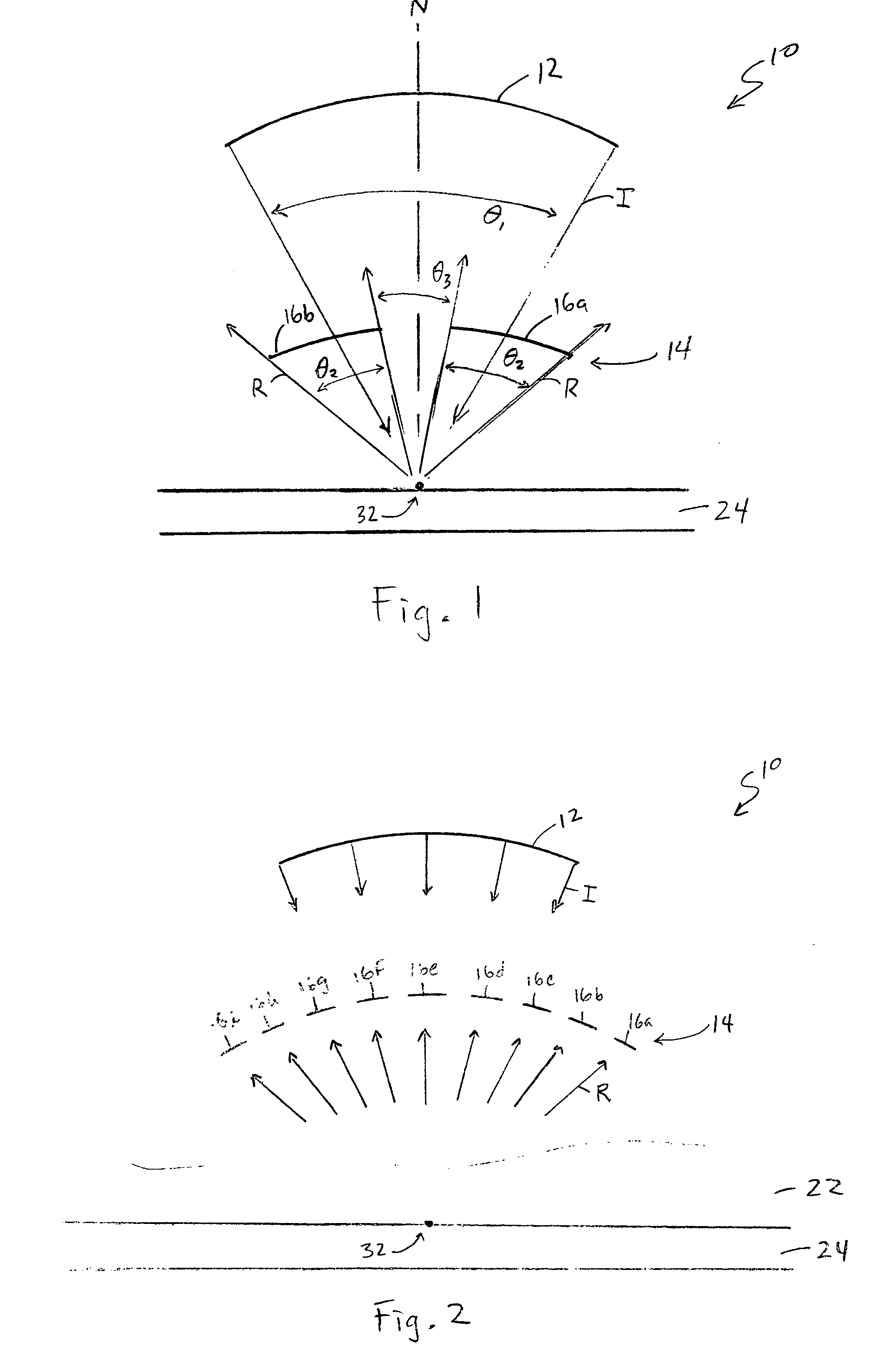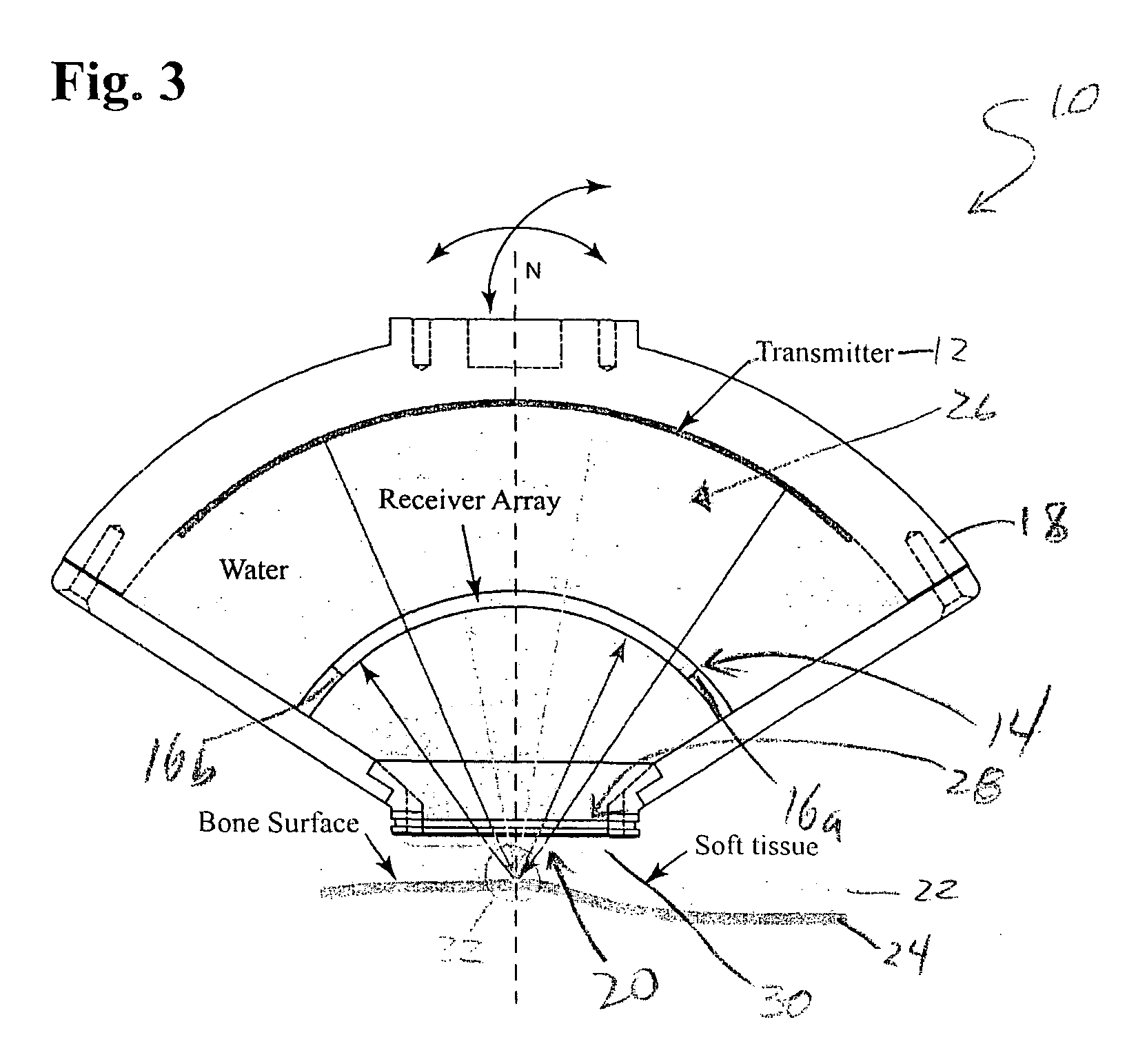Rapid and accurate detection of bone quality using ultrasound critical angle reflectometry
a critical angle reflectometry and ultrasound technology, applied in the field of bone quality determination, can solve the problems of recurrent fractures that do not heal properly, severe impairment of bone quality, and inability to detect inferior bone quality, so as to improve bone quality, reduce bone quality, and detect inferior bone quality
- Summary
- Abstract
- Description
- Claims
- Application Information
AI Technical Summary
Benefits of technology
Problems solved by technology
Method used
Image
Examples
Embodiment Construction
While the making and using of various embodiments of the present invention are discussed in detail below, it should be appreciated that the present invention provides many applicable inventive concepts, which can be embodied in a wide variety of specific contexts. The specific embodiments discussed herein are merely illustrative of specific ways to make and use the invention and do not delimit the scope of the invention.
Ultrasound Critical Angle Reflectometry (UCR). In the early 1990s, the present inventors introduced a novel method, called ultrasound critical-angle reflectometry or UCR, for measuring bone quality based on the “reflection” of ultrasound across small parts of bone surfaces of about 0.2 mm (Antich, et al., J. Bone Min. Res. 6:417-426, 1991). Bone quality may be derived or inferred from ultrasound velocity. The original UCR device determined velocity in cortical bone (“hard bone” on outer parts of bone tissue) as well as in trabecular bone (“spongy bone” in the inne...
PUM
 Login to View More
Login to View More Abstract
Description
Claims
Application Information
 Login to View More
Login to View More - R&D
- Intellectual Property
- Life Sciences
- Materials
- Tech Scout
- Unparalleled Data Quality
- Higher Quality Content
- 60% Fewer Hallucinations
Browse by: Latest US Patents, China's latest patents, Technical Efficacy Thesaurus, Application Domain, Technology Topic, Popular Technical Reports.
© 2025 PatSnap. All rights reserved.Legal|Privacy policy|Modern Slavery Act Transparency Statement|Sitemap|About US| Contact US: help@patsnap.com



